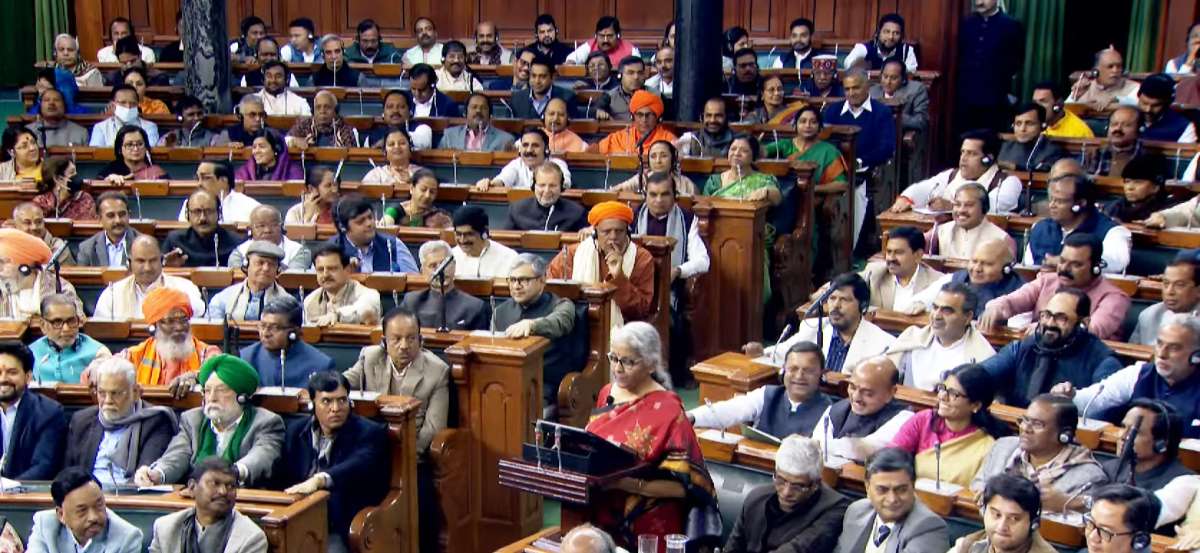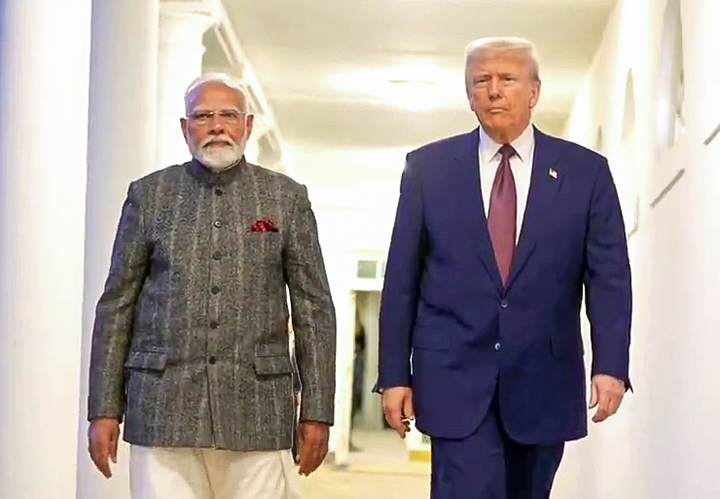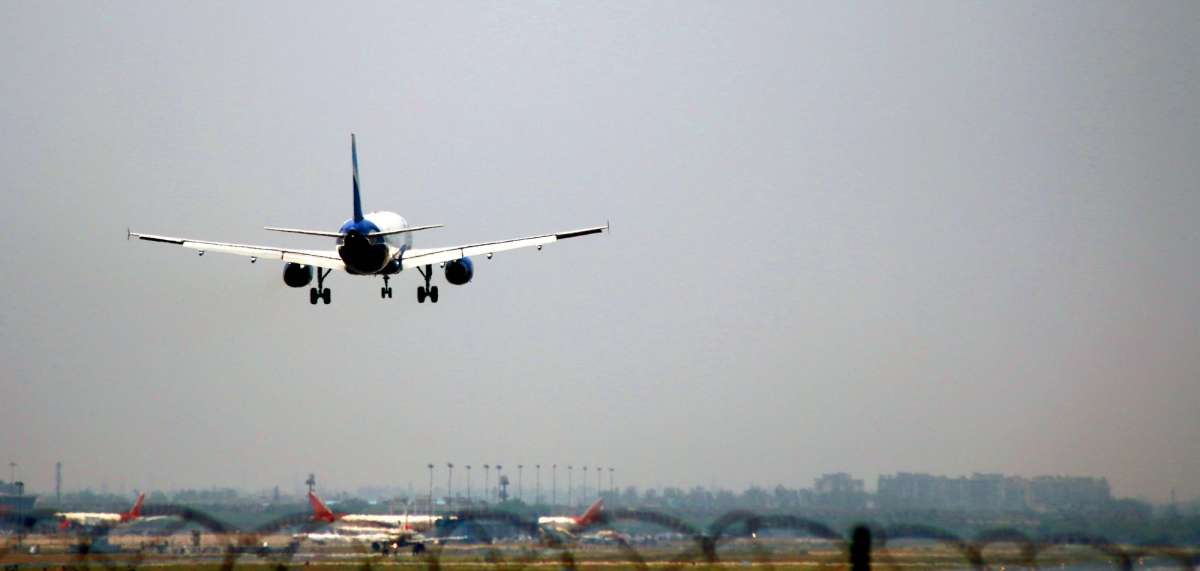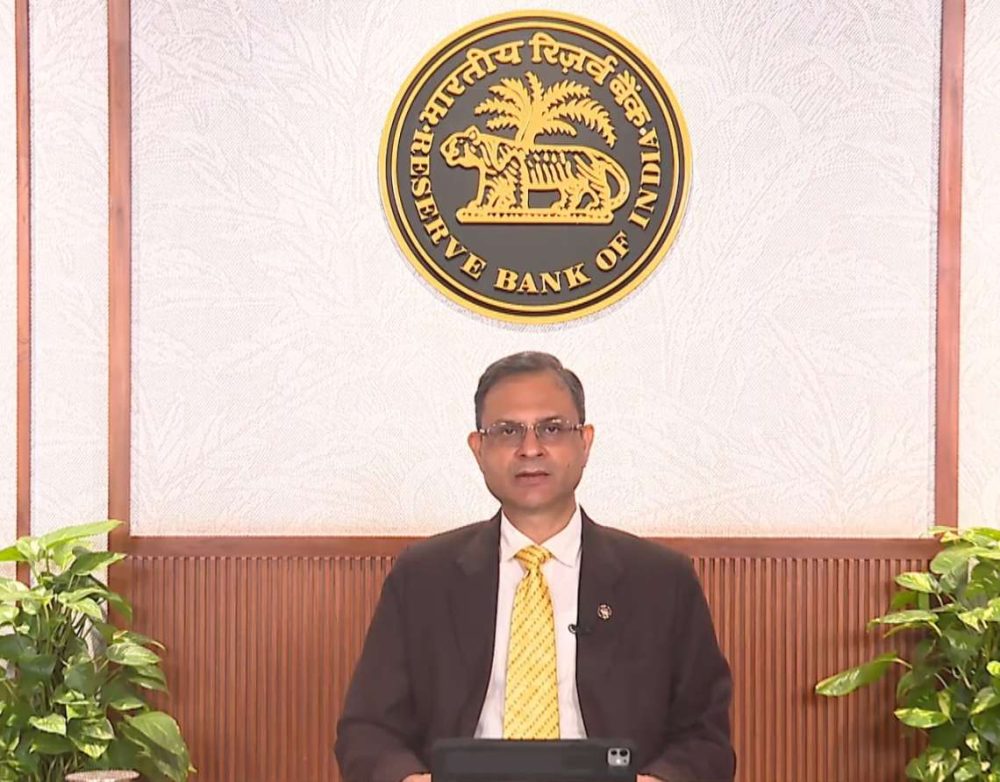As India is looking up to rise in the global supply chain and become a technology hub, the budget has allocated huge amounts for digital infrastructure and skilling of the young human resources in emerging technologies…reports Asian Lite News
Provisions of India’s Budget for FY 2023-24 show the country’s firm resolve to play the role of engine of growth for the sagging global economy. This is why India was earlier described by multilateral agencies as a bright spot amid global economic uncertainty and looming recession and Russia-Ukraine War further hurting the prospects of post pandemic economic recovery.
The International Monetary Fund’s (IMF) January 2023 World Economic Outlook Update projected a decline in global growth to 2.9 per cent in 2023 and a marginal improvement to 3.1 per cent in 2024. The forecast is 0.2 percentage point higher than predicted in the October 2022 but below the historical average of 3.8 per cent. Rising interest rates and the war in Ukraine continue to weigh on economic activity. But the update of IMF on Indian economy was still upbeat projecting a growth rate of 6.1 per cent slightly less than earlier forecast for FY 2023-24, and 6.8 per cent for FY2024-25.
Amid these uncertainties and pressures, India has acted as a beacon for the global economy by maintaining its growth momentum and the budget for FY 2023-24 raises hope that India would continue to maintain its growth momentum with a proposal for capital expenditure to the tune of Rs 10,000 crore in the ensuing year.
The acumen to maintain a high level of capital expenditure amid the continued effort of the government of India for fiscal prudence and financial consolidation is not only commendable, but a model many of the developing and developed countries could emulate. The FY 2023-24 budget shows that while India is traversing well on the path of fiscal prudence and consolidation as envisaged in India’s long and intermediate terms fiscal policy, it is also maintaining its commitment for the same in immediate and short terms.

The Union Budget 2023 has set the fiscal deficit target for the upcoming fiscal year at 5.9 per cent of gross domestic product (GDP). The proof of government’s success in remaining on the path of fiscal consolidation as conceived in India’s Fiscal Regulation and Budget Management Act (FRBM Act) lies in the fact that the Government of India succeeded in maintaining the target of 6.4 per cent of GDP in the current fiscal year. Even if a risk of possible fiscal slippage in the ensuing fiscal year is apprehended as general election campaigning begins in 2024, the recent success in meeting deficit targets shows that the risk is smaller than in the past.
The government has not shied to pursue fiscal prudence even in view of an election year in 2024. The evidence to that is rationalisation of expenditure of flagship rural employment assurance programme under Mahatma Gandhi National Rural Employment Guarantee Act (MNREGA). The Budget has proposed to earmark only Rs 60,000 crore for implementing the rural job scheme in 2023-24. The allocation for the rural job scheme for the next financial year is 17.80 per cent lower than the budgetary estimate of Rs 73,000 crore for 2022-23. Although, depending upon demand for such jobs MNREGA provides remaining sluggish has cut down the allocation to the programme as a rationalisation move, the government officials have made it clear that if demand for such jobs under MNREGA increase, it would allocate additional fresh supplementary budget to the head. This and other expenditure rationalisation moves helped the government to stick to the fiscal deficit roadmap as stipulated in the FRBM act.
Despite being politically unpopular, the Budget FY23-24 has cut down food subsidy to drop to around Rs 1.97 trillion, which is 31.28 per cent lower than the Revised Estimates (RE) of FY23, while fertilizer subsidy is projected to dip to around Rs 1.75 trillion, which is 22.25 per cent less than the Budget Estimates (BE) of FY23. In FY23, the Union Government had budgeted food subsidy at Rs 2.06 trillion while the RE showed it bulged by almost 39 per cent to Rs 2.87 trillion as the Government persisted with the free grains scheme for the first nine months of 2023. As situation caused by pandemic has eased, the step has been taken for fiscal prudence.
But to ensure that these efforts for fiscal prudence do not disturb growth of the agriculture sector, government has proposed to increase the agriculture credit for the next fiscal year to Rs 20 lakh crore, with focus on animal husbandry, dairy and fisheries, from Rs 18 lakh crore for FY22-23.
Government has pinned its hopes on generation of employment for the largest working population of world by maintaining a high growth rate through capital expenditure (capex) in infrastructure and energy sector. The Union Budget for 2023-24 has been lauded for being bold in its vision as the Finance Minister (FM) ramped up capex by 33 per cent to Rs 10 lakh crore at 3.3 per cent of GDP. This is a positive move that will support economic growth and help crowd in private investment. Even the break up of allocation to various infrastructure heads and allocation to energy sector is heartening. The budget has focused on improving physical and digital infrastructure.
It could go a long way in generating big backward linkages and forward linkages and also multiplier effects to eventually create huge employment.
Investment on infrastructure remains a major thrust of the budget. While the Ministry of Road Transport and Highways has been allocated a capital budget of Rs 2.58 lakh crore, the Railway Ministry has been given Rs 2.4 lakh crore and the Defence Ministry has been allocated Rs 1.71 lakh crore. The Department of Telecommunications, which is leading the 5G rollout in the country, has been allocated Rs 61,000 crore for capital expenditure. This would help growth in many industries which provide intermediate goods for road-rail development like iron & steel, cement, telecommunication and electric goods & equipment.
One of the most remarkable features of the budget 2023-24 is that it focuses on sustainable energy and development. India has become the first country among the developing countries and emerging markets to allocate a huge amount on green energy. The budget has allocated Rs 35,000 crore for ‘priority capital investments’. The Indian FM called for pursuing ‘green growth’ and remarked that it would remain one of the country’s top priorities for the year. Besides, it is also commendable that the budget proposed an ambitious plan for alternative energy and allocated a mammoth amount in the budget for the same.
In her budget speech, FM Nirmala Sitharaman said, “These green growth efforts help in reducing carbon intensity of the economy and provide for large-scale green job opportunities.” The Ministry of Environment, Forest and Climate Change (MoEFCC) got a budgetary allocation of Rs 3,079.40 crore this year, a slight increase from last year’s Rs 3,030 crore.
The budget continued its thrust on the National Green Hydrogen Mission announced last year and allocated an outlay of Rs 19,700 crore. The mission “will facilitate transition of the economy to low carbon intensity, reduce dependence on fossil fuel imports, and make the country assume technology and market leadership in this sunrise sector.”
To facilitate the production of electric vehicles, the budget extended on customs duty exemption to incentivise import of capital goods and machinery required for manufacture of lithium-ion cells for batteries used in electric vehicles.
In line with the ‘Lifestyle for the Environment’ (LiFE) mission announced by Prime Minister Narendra Modi in 2021 – which aims to promote sustainable lifestyles – the government will implement a ‘green credit’ programme to inspire behavioural change. “This will incentivize environmentally sustainable and responsive actions by companies, individuals and local bodies, and help mobilise additional resources for such activities.”
The Union Government showed its concern on waste management also in the budget 2023-24. To ‘promote a circular economy’, the government will set up 500 ‘waste to wealth’ plants at a cost of Rs 10,000 crore, 200 of which will be compressed biogas plants. A majority of these ‘waste to wealth’ plants – 300 – are envisioned to be in rural areas. In the budget speech, the FM also said that the government will incentivise the use of ‘alternative fertilisers’ to balance the use of chemical ones, as well as promote ‘natural farming’. India’s agriculture sector is the second largest emitter, accounting for 16 per cent of India’s emissions, after electricity.
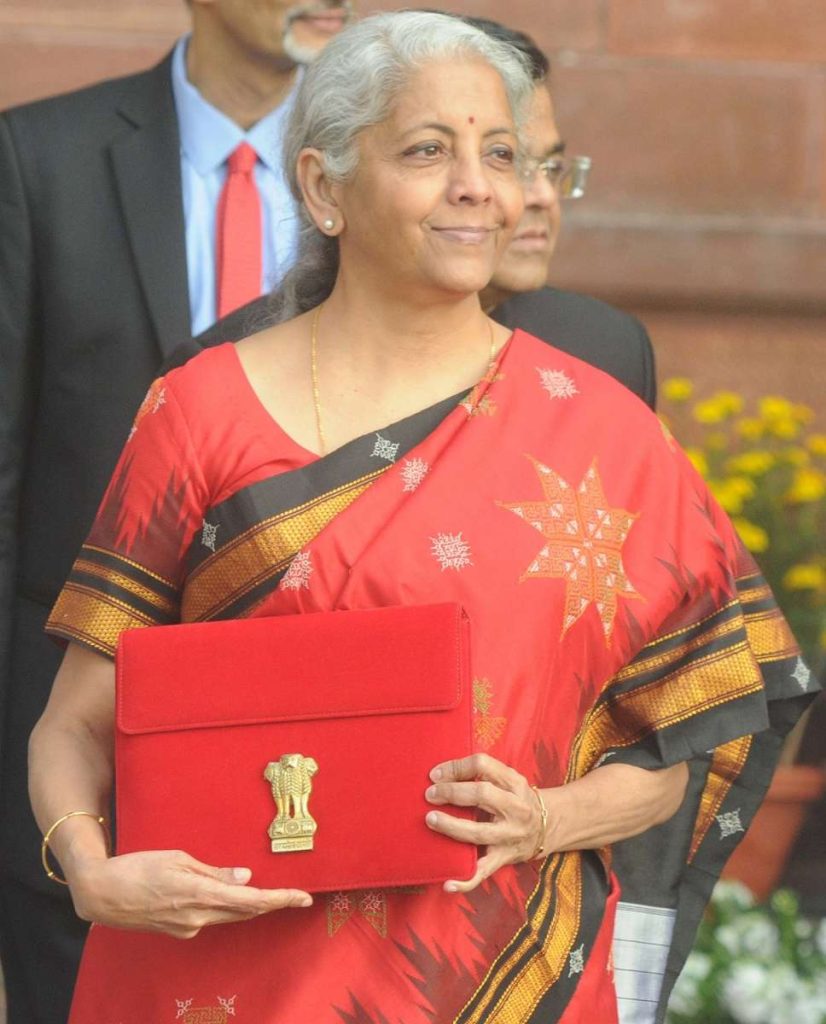
The push for such schemes to speed up India’s sustainable development comes at a time when it is set to achieve net-zero carbon emissions by 2070. India is currently the world’s third-largest emitter and will rely heavily on ramping up renewable energy and green hydrogen fuel to decarbonise in line with its objectives.
As India is looking up to rise in the global supply chain and become a technology hub, the budget has allocated huge amounts for digital infrastructure and skilling of the young human resources in emerging technologies. The budget has allocated Rs 10,676.18 crore this year for ‘Digital India’ programme, up from Rs 6,388 crore last year. Already India is considered to be one of the leading countries in the world which has produced many digital public goods which go a long way in improving efficiency in public service and welfare delivery.
The Budget envisions a technology-driven and knowledge-based economy with strong finances. Some of the focus areas to achieve this are artificial intelligence (AI), adopting open source software, and opportunities from the 5G internet. The government plans to deploy digital solutions in all its seven priority areas – from infrastructure and last-mile delivery to the financial sector.
The skill-development initiative scheme, Pradhan Mantri Kaushal Vikas Yojana 4.0, has been extended to provide new-age courses for Industry 4.0 like coding, AI, robotics, mechatronics, IOT, 3D printing, drones, and soft skills. The budget envisaged setting up three centres of excellence in AI in top educational institutions to develop ‘cutting-edge’ applications and scalable solutions in agriculture, health and sustainable cities.
Leading industry players will also partner in interdisciplinary research aimed at building an effective AI ecosystem and nurturing quality human resources in the field. The Budget has proposed to set up 100 labs in engineering institutions to realise a new range of opportunities, business models, and employment potential in the high-speed 5G internet. The allocation to the Ministry of Electronics and Information Technology (MeitY) stood at Rs 14,300 crore as against Rs 9,581.25 crore in 2021-22 and this year’s budget would continue the same focus on it.
The Budget said digital public infrastructure would be built for agriculture as an open source, open-standard, and interoperable public good. The inclusive, farmer-centric solutions platform will be developed similar to the Unified Payments Interface (UPI). The Centre has already initiated the computerisation of 63,000 primary agricultural credit societies (PACS) with an investment of Rs 2,516 crore.
The budget harbingers ‘India miracle’ that is going to happen in the following decades when India would not only become the ‘Industrial Hub’ and the ‘Technology and Innovation Hub’ of the world, but also a $10 trillion economy by 2030 and the biggest economy of the world by 2050. If the start-up development and growth and ecosystem in India is seen, there should not be any doubt that the country is today very fertile for innovation and investment.
As of September 2022, India is home to 107 unicorns with a total valuation of $340.79 billion. According to the India Venture Capital Report 2021 published by US-based Bain and Company, the number of cumulative start-ups has grown at a CAGR of 17 per cent since 2012 and crossed Rs 1,12,000 crore. The budget has proposed several incentives for the start-ups as well.
Already India has become the 5th largest economy of the world due to right policy mix and political stability. In the days to come, India would also be the centre of many supply chains with the help of the innovative policy initiatives and firm resolve to go extra mile to realise the ‘Indian Dream’. Today it has the largest young and working population in the world and Prime Minister Narendra Modi’s effort is to educate and engage them productively. He believes that when millions of hands work together, India would actually realise the goal of inclusive growth in the shortest time.


